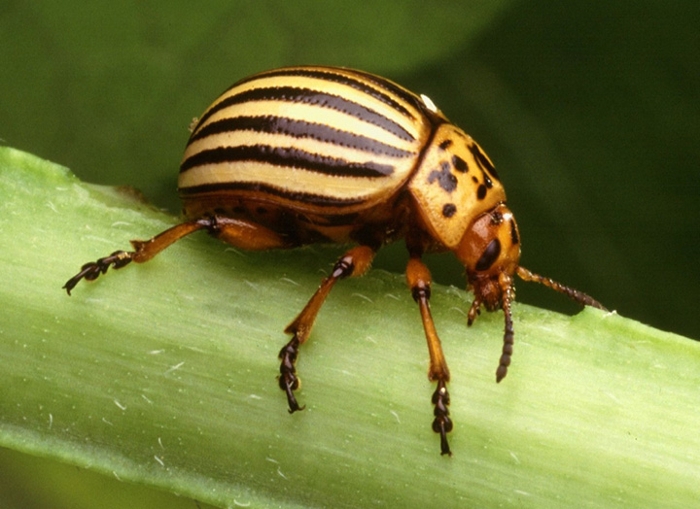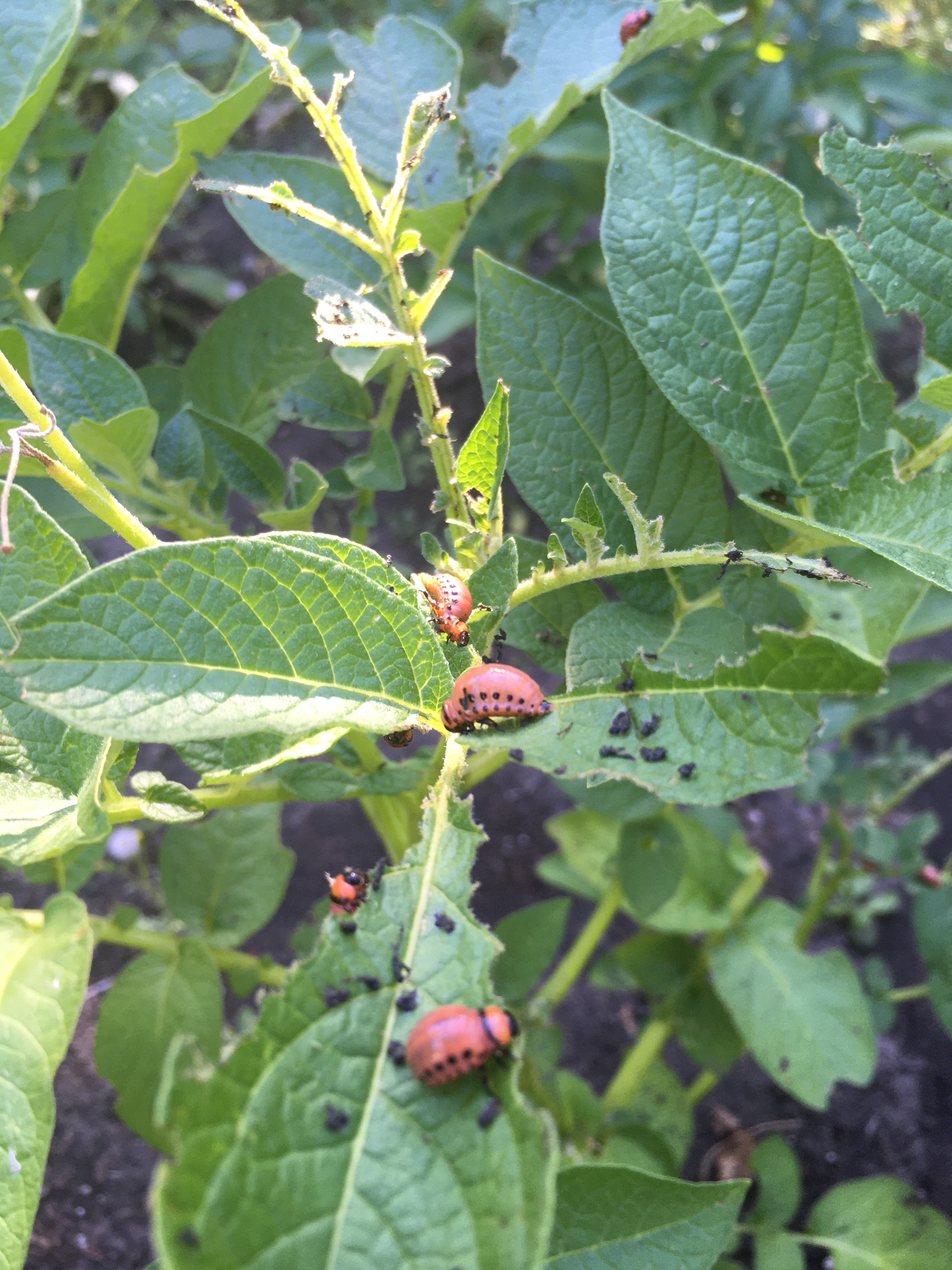The Colorado potato beetle is a problem of potato and to a lesser extent, eggplant, tomato and pepper. Both the adults and the larvae feed on foliage.
Life Cycle:
- Adults overwinter deeply (about 20 - 25 cm below the soil surface) in the previous year’s potato fields or in surrounding grassy areas.
- Overwintering adults appear in the late May or early June; feed for a few days on the emerging potato crop and then mate.
- Individual females lay 300-500 bright yellow/orange eggs from June to late July. The eggs are found on the underside of potato leaves.
- Once the eggs hatch, larvae appear as 3-mm long yellow-orangey red soft-bodied organisms (see photo below). The larvae feed heavily on the leaves for the next 3-5 weeks and then burrow into the soil.
- Pupation occurs in the soil and new adults emerge in 1-2 weeks.
- The new adults feed for a few days and then begin to look for a protected spot to hibernate through the coming winter.
- In Saskatchewan, there is usually only one generation of Colorado potato beetle per growing season.
Control:
- Avoid growing potato plants in or near the same area of the garden for a minimum of three years.
- Pick the first flush of adult beetles by hand – this will reduce eggs laid, larvae and the number of adult beetles later in the season.
- Wash your hands after picking these insects because they contain a chemical that can irritate skin in sensitive individuals. Another option is to use disposable gloves.
- Try planting an early trap crop once your soil has thawed – perhaps 4 or 5 plants. Then plant your main crop in mid June. The early crop will come up and fewer plants makes it easy to scout for and pick the beetles. Once your main crop comes up, the beetles will be under control.
- Floating row covers are preventative measure if your plants have not been previously affected. Put them in place before the plants come up and keep in place through to the end of June.
- For larger gardens, consider digging a plastic lined trench around the potato patch. The beetles will become trapped in the plastic lined trench as they are unable to climb the steep, slippery walls of the trench.
- Rototill in early spring and in fall to expose the overwintering adult beetle to cold, dehydration and predators.
Sources:
Williams, S.; Skinner, H. (2011). Gardening, naturally: A chemical-free handbook for the Prairies. Regina, Saskatchewan: Coteau Books.



